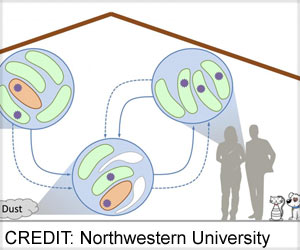The research team wanted to understand the mechanism behind the differential bacterial binding on certain surfaces to prevent bacterial colonies on medical implants.

‘Bacteria bind tightly on hydrophobic surfaces as most of their cell wall proteins are involved in the binding. However, fewer cell wall proteins are involved in the binding of bacteria on hydrophilic surfaces making the bacteria less firmly attached on hydrophilic surfaces.
’
Read More..




Staphylococcus aureus bacteria are one of the most common causes of infections acquired by patients during their stay in the hospital. Read More..
These bacteria can form robust biofilms on natural and artificial surfaces. Once they form biofilms, they are challenging to remove.
Antibiotics and the body’s immune system protects people from individual bacteria in the biofilms.
It is very dangerous when bacteria colonize medical implants as they can cause serious post-operative infections.
To prevent the growth of these bacteria on biofilms, scientists need to understand the mechanisms by which the bacteria adhere to different materials.
Advertisement
They used smooth silicon surfaces as model surfaces. In one set of experiments, the silicon surface was hydrophilic. In contrast, in another set of experiments, the silicon surface was hydrophobic.
Advertisement
The researchers also observed differences in the shapes of the force-distance curves. Very smooth curves were observed on hydrophobic surfaces while hydrophilic surfaces showed curves with a very jagged profile.
To understand these results, the dynamics of these complex systems were modelled using Monte Carlo simulations that were carried out in the research group at Saarland University.
The researchers have uncovered the reason behind differences in behavior when bacterial cells adhere to different surfaces.
A large number of cell wall proteins adhere to the hydrophobic surfaces. This results in a strong binding force and a smooth force-distance curve.
Very few cell wall proteins are involved when bacterial cells adhere to hydrophilic surfaces. Thus, the bacteria are held less strongly on the surface, and the shape of the force-distance curve is less uniform.
"The potential barrier to adhesion on hydrophilic surfaces is relatively high, so only a few of the cell wall proteins can overcome this energy barrier in a particular time. On hydrophobic surfaces, however, the barrier is negligibly small, so that many cell wall proteins can adhere directly to the surface," explains Dr. Christian Spengler, who performed the experiments in the study.
Source-Medindia












